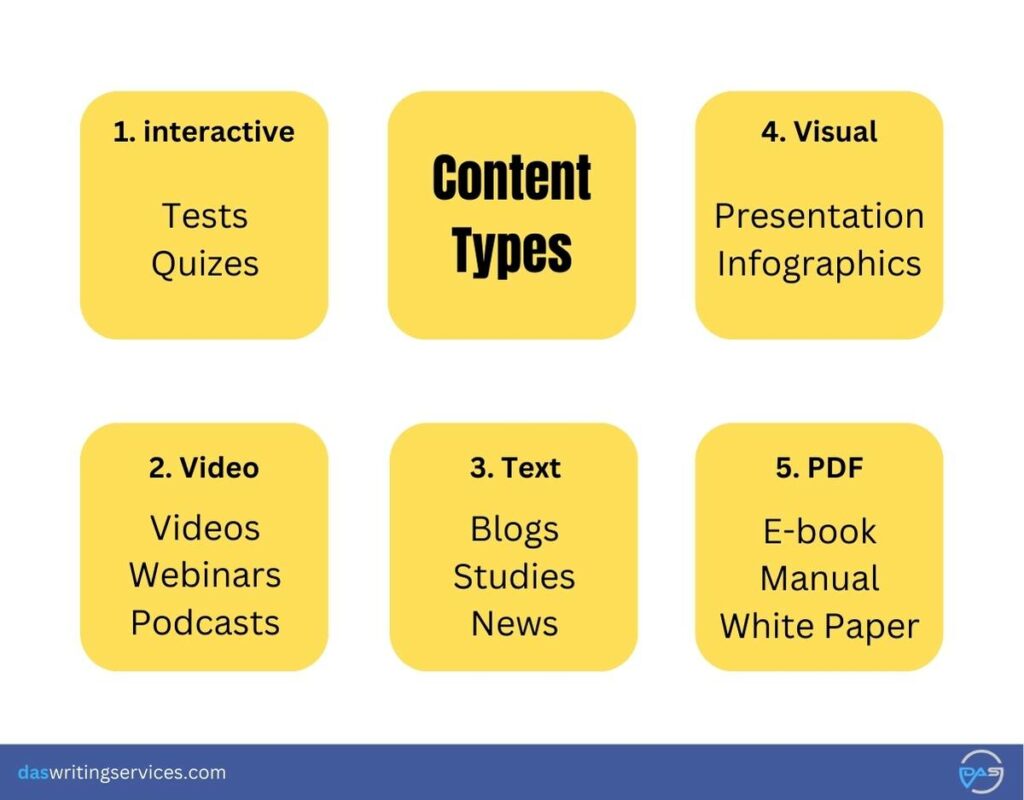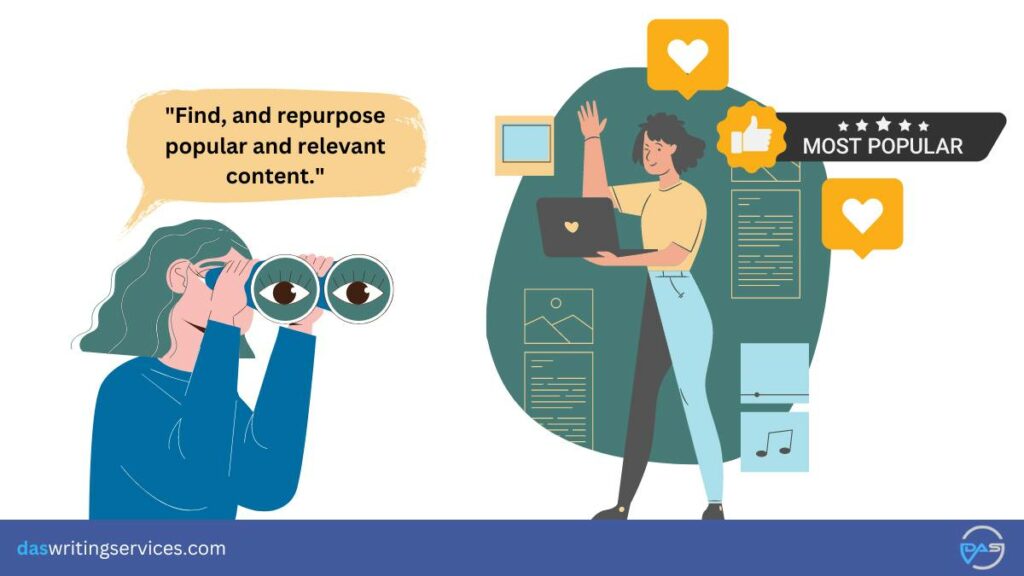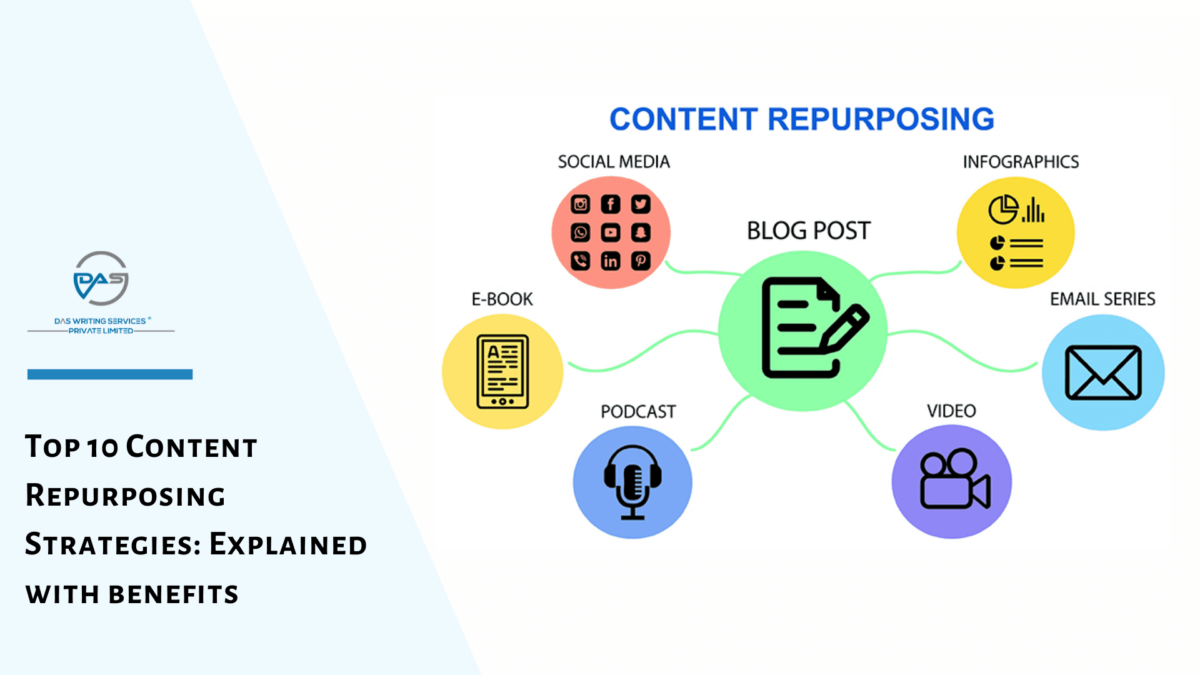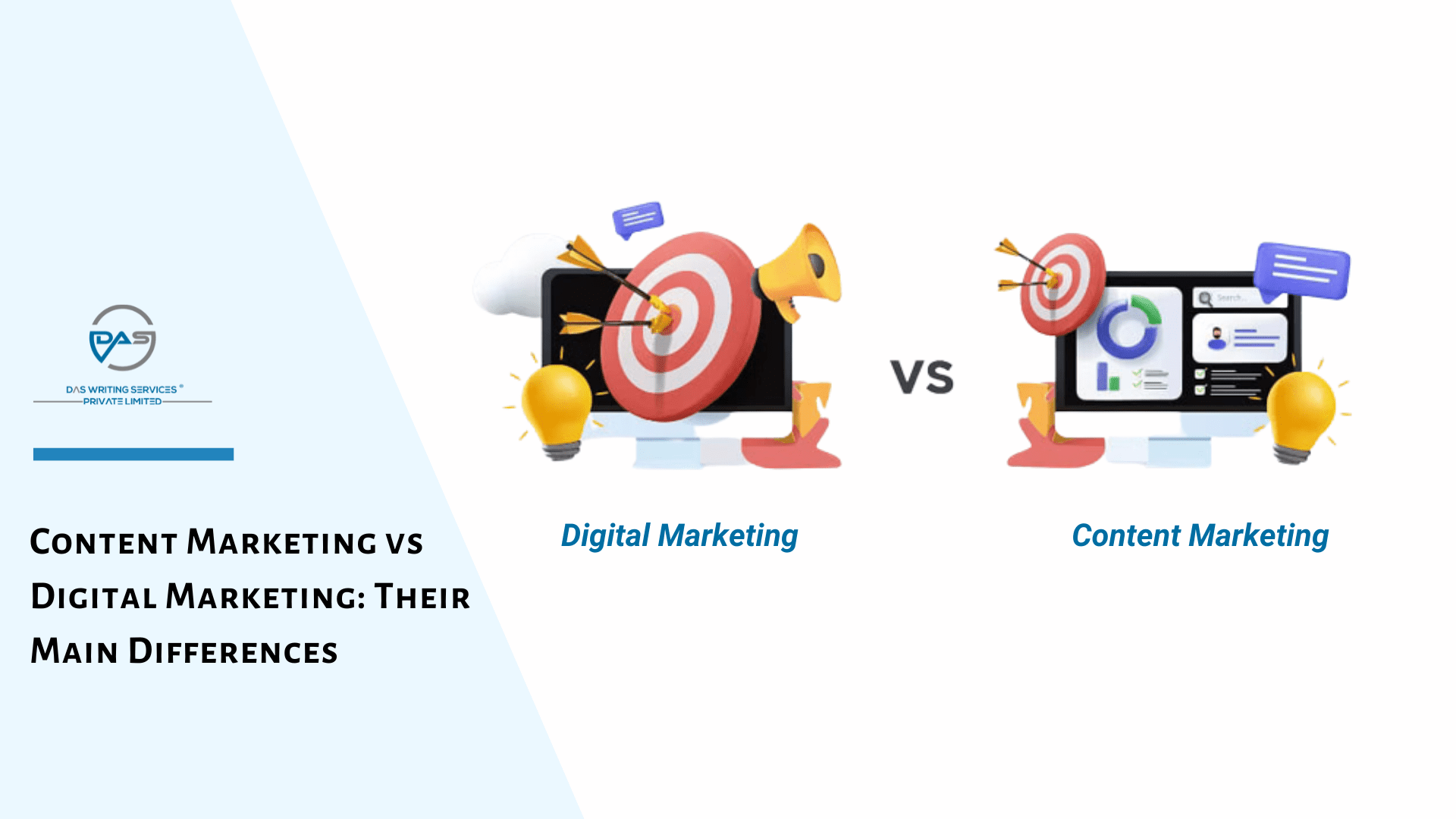Content serves as the foundation of effective marketing strategies for businesses of any scale. Nevertheless, consistently producing top-notch content can be a time-consuming and resource-intensive endeavour. This is where content repurposing comes in, enabling you to maximise the value of your content.
Content repurposing involves taking existing content and transforming it into different formats to reach broader audiences, increase engagement, and optimise your return on investment (ROI). It is a smart, efficient way to extend the life and reach of your valuable content.
In this guide, we will explore what content repurposing is, why it’s essential, and how you can do it effectively.
Looking to get affordable content marketing solutions?
What is Content Repurposing?
Content repurposing is the process of taking a piece of content—like a blog post, video, podcast, or infographic—and adapting it into different formats for various platforms or audiences. For example, a well-researched blog post can be repurposed into a YouTube video, a series of social media posts, a podcast episode, or even an infographic.

The idea behind content repurposing is simple: maximise the value of the time and resources you invest in content creation by diversifying its use. It’s not about simply reposting the same content across multiple channels; instead, it’s about creatively transforming the content to suit different formats and appeal to different audiences.
What are the Benefits of Repurposing Content?
Repurposing content is not just a way to extend the life of your material; it is a strategic approach that offers several key benefits. By transforming existing content into new formats, you can reach different audiences, improve visibility, and ensure consistent messaging across multiple channels.
Let us explore the core advantages of implementing content repurposing into your strategy.
1. Reach a Broader Audience
Different people have different content consumption preferences. By repurposing content into various formats, like videos, infographics, or podcasts, you can cater to diverse audience segments who might not have engaged with the original content.
2. Improve SEO and Increase Organic Traffic
Repurposing content can help you target different keywords, expand your content’s reach, and attract more organic traffic. The more variations of content you have across platforms, the more opportunities there are for search engines to index your material.
3. Save Time and Resources
Creating content from scratch can be time-consuming and expensive. By repurposing existing content, you save on the time and resources needed to consistently produce fresh material, allowing you to achieve more with less effort.
4. Reinforce Key Messages
Repetition is key in marketing. Repurposing allows you to deliver the same core message in different ways across multiple channels, reinforcing it with your audience and increasing the likelihood of it sticking.
5. Increase Content Lifespan
Content that’s been repurposed doesn’t become obsolete. A single piece of content can continue delivering value over time as it is reshaped into various formats that extend its relevance.
6. Enhance Engagement and Shareability
Different formats, like visual content or quick tips, are more shareable on social media. By repurposing content, you can increase engagement and make it easier for users to share your content.
7. Foster Consistency Across Platforms
Consistency in messaging builds trust and brand recognition. Repurposing content ensures your messaging remains consistent while adapting to platform-specific preferences.
Effective Strategies for Content Repurposing
A successful content repurposing strategy requires more than just reusing content. It involves thoughtful planning, selecting the right content, and tailoring it to different formats and platforms.

In this section, we will dive into the essential strategies you need to follow to maximise the impact of your repurposed content.
1. Create a Plan
Start by identifying content that’s worth repurposing. This includes evergreen content, high-performing blog posts, or pieces with timeless insights. Plan how and where you will repurpose this content based on your goals and audience preferences.
2. Choose the Right Content
Not all content needs to be repurposed. Focus on pieces that have already proven valuable or content that addresses enduring topics. Evergreen content is especially suited for repurposing because it remains relevant over time.
3. Break Down Key Insights
Extract key takeaways from your content and turn them into bite-sized pieces that can be repurposed. For instance, a long blog post can be broken down into quotes, tips, or statistics that can be reshared as tweets or social media posts.
4. Select Your Channels
Consider where your audience is most active. For instance, if your audience engages with visual content, repurpose text into infographics for Instagram or Pinterest. Choosing the right platforms ensures you meet your audience where they are.
5. Decide on the Formats
Determine the best formats for your repurposed content. Some content works well as video, while others might be more effective as a podcast or eBook. Tailor the format to suit the channel and the nature of your original content.
6. Activate and Distribute
Once your content is repurposed, don’t forget to distribute and promote it. The success of repurposing lies not just in transforming the content but also in ensuring it reaches the intended audience.
11 Genius Ways to Repurpose Content
Looking for creative ways to repurpose your content? Whether you are dealing with blog posts, videos, or internal data, there are countless possibilities to extend their value.
This is where content repurposing comes into play, and Das Writing Services Pvt. Ltd., a leading content repurposing service, can help you maximise the value of your content.
Here are eleven innovative methods to transform your existing content into fresh, engaging formats that attract new audiences and boost ROI:
1. Old Blog Posts → In-Depth Guides
Update and expand older blog posts into comprehensive guides or eBooks. This adds more value to the content and provides an opportunity to capture leads by offering it as downloadable material.
2. Internal Data → Case Studies
Use data and insights from your business operations to create case studies. These are great for building authority and providing social proof to potential clients.
3. PowerPoint Presentations → Slide Decks
Repurpose internal presentations or client proposals into slide decks that can be shared on LinkedIn or SlideShare. Visual slides are easily digestible and often perform well on professional networks.
4. Webinars → Video Tutorials
Turn recorded webinars into shorter, focused video tutorials. Break them down into mini-lessons or how-to videos that can be shared on YouTube or embedded in blog posts.
5. Slideshows → Infographics
Convert presentation slides into infographics. Infographics are easily shareable and break down complex information into engaging visuals, making them ideal for social media and blogs.
6. Interviews → Expert Advice eBooks
Compile interviews with industry experts into an eBook filled with valuable advice. This can be a lead magnet or a content piece to establish your authority in the field.
7. Quora Q&A → Blog Posts
If you’ve provided detailed answers on Quora or similar forums, expand them into full blog posts. This allows you to leverage your expertise while repurposing content from platforms you’re already active on.
8. Visual Content → Pinterest Boards
If you have infographics, diagrams, or visually engaging content, pin them to Pinterest boards. Pinterest is a visual discovery platform, making it perfect for this type of content.
9. Blog Posts → Tips Newsletters
Turn blog posts into actionable tips for your email subscribers. This keeps your audience engaged with valuable insights while repurposing existing content.
10. Statistics → Twitter Posts
Extract key statistics from your content and share them as tweets. Highlighting data in bite-sized posts can drive engagement and increase your content’s visibility.
11. Blog Posts → Podcasts
Convert written content into podcasts by discussing the key points in an audio format. This reaches audiences who prefer listening over reading, expanding your content’s reach.
How to Analyse the Effectiveness of Repurposed Content?
Analysing the performance of your repurposed content is crucial to understanding its impact and optimising future content strategies.
By tracking specific key performance indicators (KPIs) across various platforms, you can measure how well content repurposing resonates with your audience and contributes to your overall goals.
Below are some essential KPIs and how to leverage them for effective analysis:
1. Website Traffic
Measure the amount of traffic driven to your site from repurposed content. Use analytics tools like Google Analytics to track referral traffic from various channels where the repurposed content is shared. Analyse whether specific platforms or content formats are contributing significantly to traffic and which ones need adjustment.
2. Conversion Rates
Ultimately, the goal of repurposed content is to drive actions, whether that’s generating leads, sales, or sign-ups. Track how many conversions your repurposed content drives. Analyse conversion paths to understand which pieces of content or formats are most effective at nudging users down the sales funnel.
3. Engagement Metrics
Engagement is a direct reflection of how your audience interacts with your content. Monitor likes, comments, shares, retweets, and views across platforms. High engagement signals that your repurposed content is resonating with your audience. Dive deeper by assessing the type of content that garners the most interaction—whether it’s videos, infographics, or blog posts—and refine your strategy accordingly.
4. SEO Performance
SEO is a major consideration when evaluating repurposed content. Monitor improvements in search engine rankings for relevant keywords and track organic traffic growth. Look for increases in visibility, search impressions, and clicks driven by repurposed content. Assess how repurposing blog posts into formats like infographics or videos impacts their SEO performance.
5. Backlinks and Authority
Backlinks are a critical factor in SEO, as they contribute to your domain authority. Track the number of backlinks generated from repurposed content. High-quality backlinks indicate that your content is being recognised as valuable and authoritative. Analyse which repurposed formats—such as infographics or in-depth guides—attract the most backlinks and tailor future content to capitalise on this trend.
Takeaway
Utilising content repurposingis an effective approach to magnify your message, conserve resources, and increase ROI. Through the implementation of these tactics and methods, you can guarantee that your content consistently provides value across various platforms and forms.
Whether your goal is to broaden your audience, enhance SEO, or uphold brand uniformity, content repurposing presents a pragmatic and efficient answer to optimising your content’s capacity.
Frequently Asked Questions
1. How do I start building a content repurposing strategy?
Begin by auditing your existing content to identify pieces with high potential for repurposing. Then, plan which formats and platforms align with your goals. Create a content calendar that includes repurposing activities and tracking their performance to refine your strategy over time.
2. Is repurposing content just about reposting it?
No, content repurposing is more than just reposting. It involves creatively adapting content to different formats that cater to specific platforms and audience preferences. The goal is to refresh the content and make it relevant in new contexts.
3. What are the most common ways to repurpose content?
Some popular repurposing methods include turning blog posts into infographics, transforming videos into podcasts, creating social media snippets from longer content, and converting case studies into eBooks.
4. How do I know which content is suitable for repurposing?
Focus on evergreen, high-performing, or popular content that has proven valuable to your audience. Content with in-depth research, timeless information, or consistent traffic is ideal for repurposing into new formats.






Leave a comment
All comments
Misael Holland
There is definately a lot to find out about this subject. I like all the points you made
Elisabeth Hays
I am truly thankful to the owner of this web site who has shared this fantastic piece of writing at at this place.